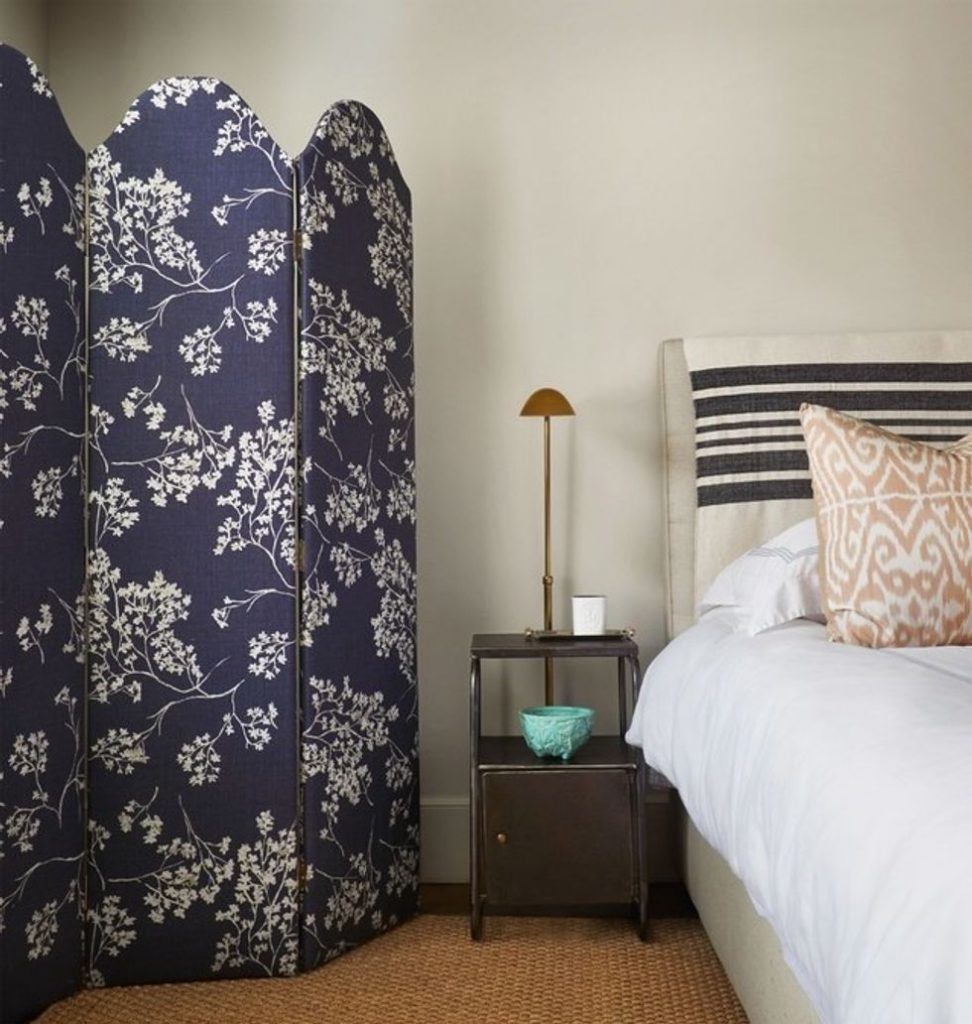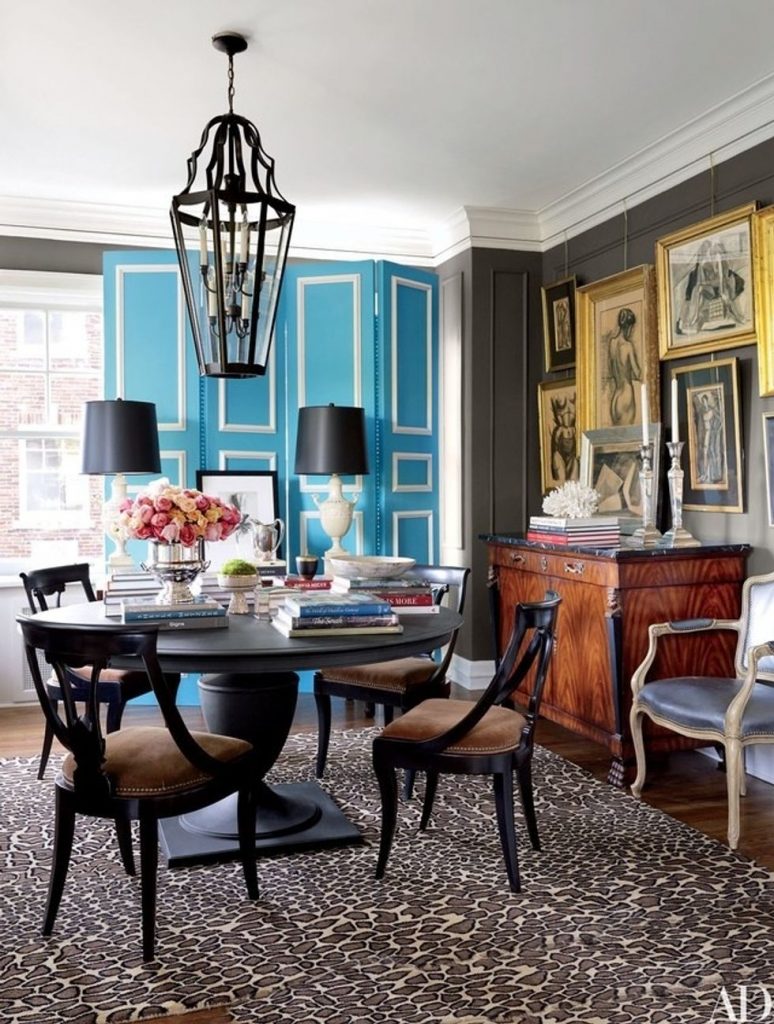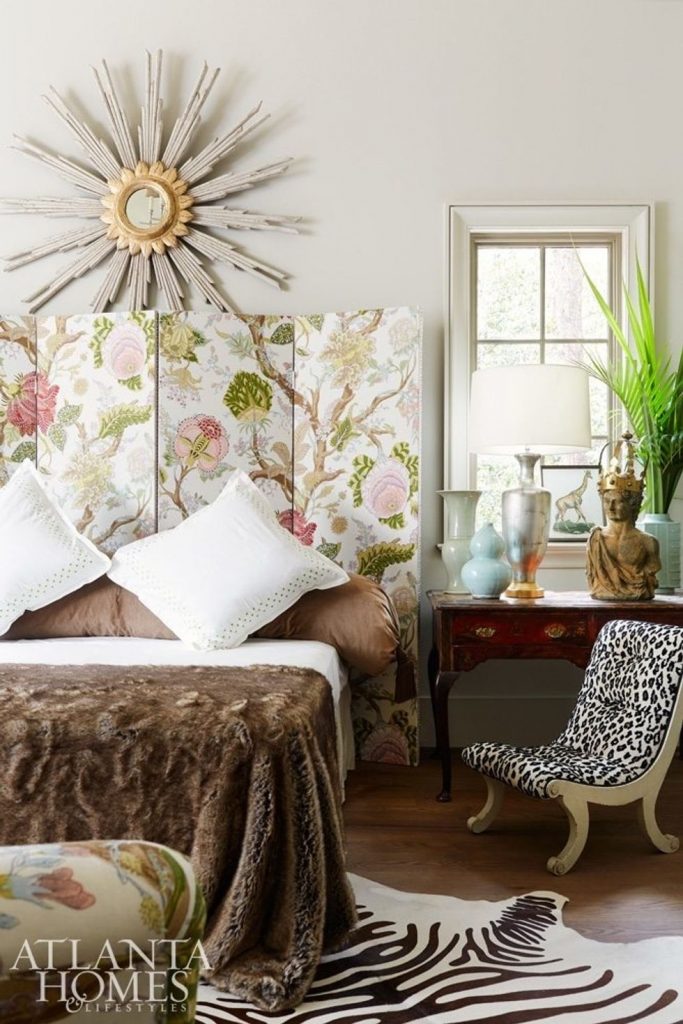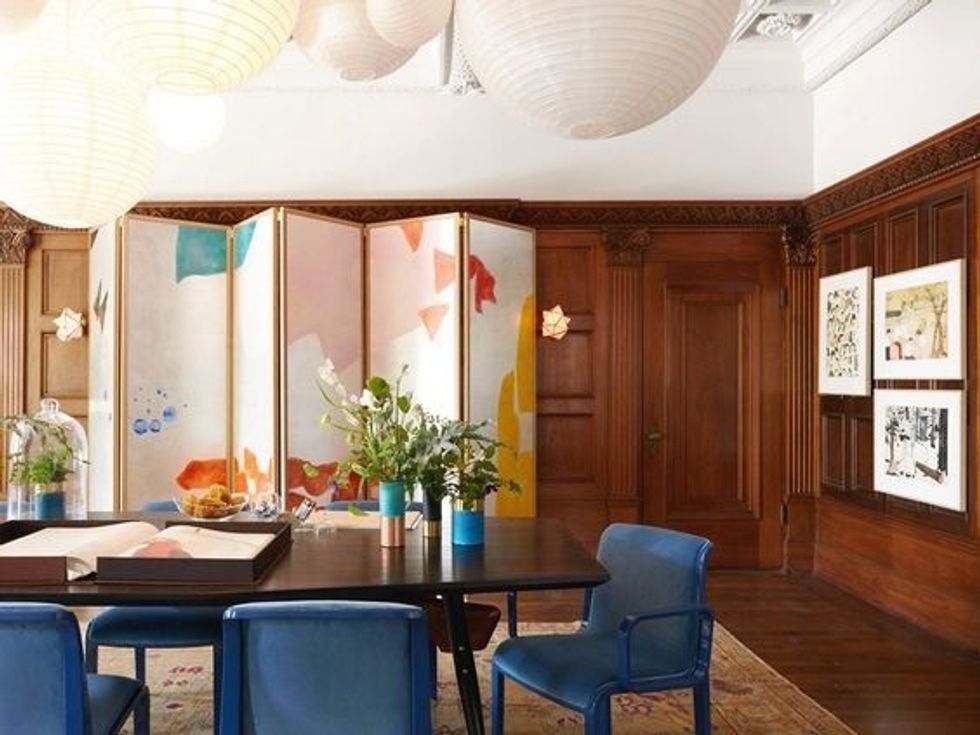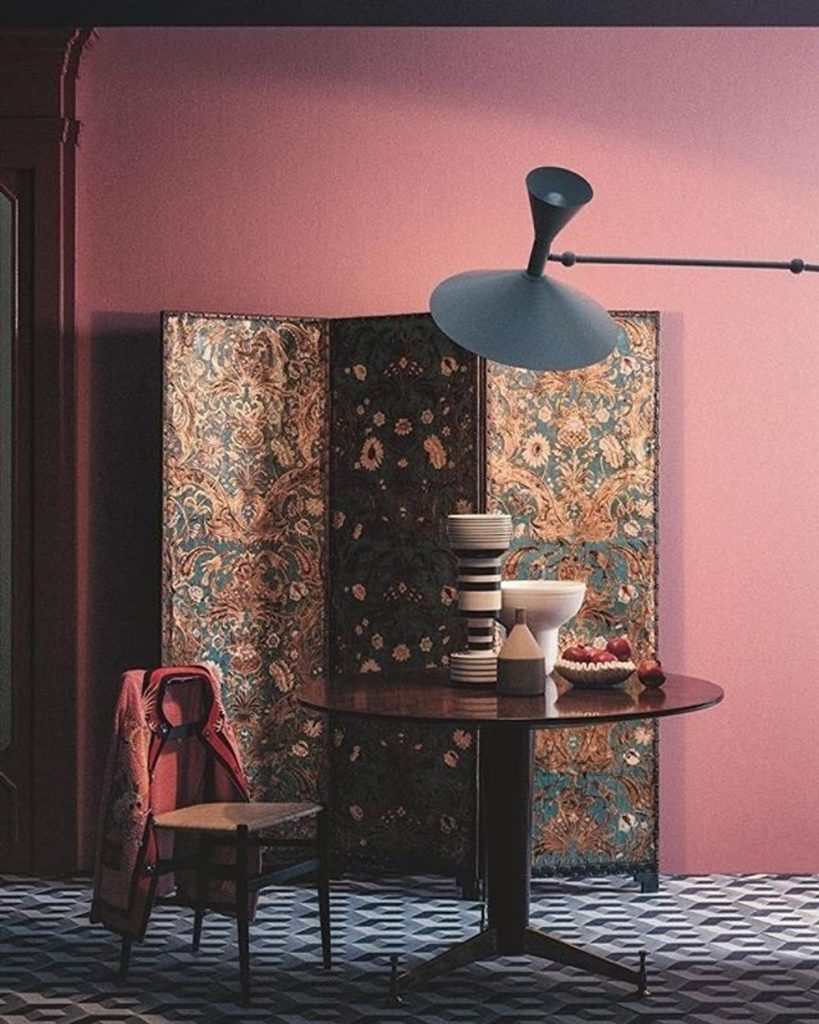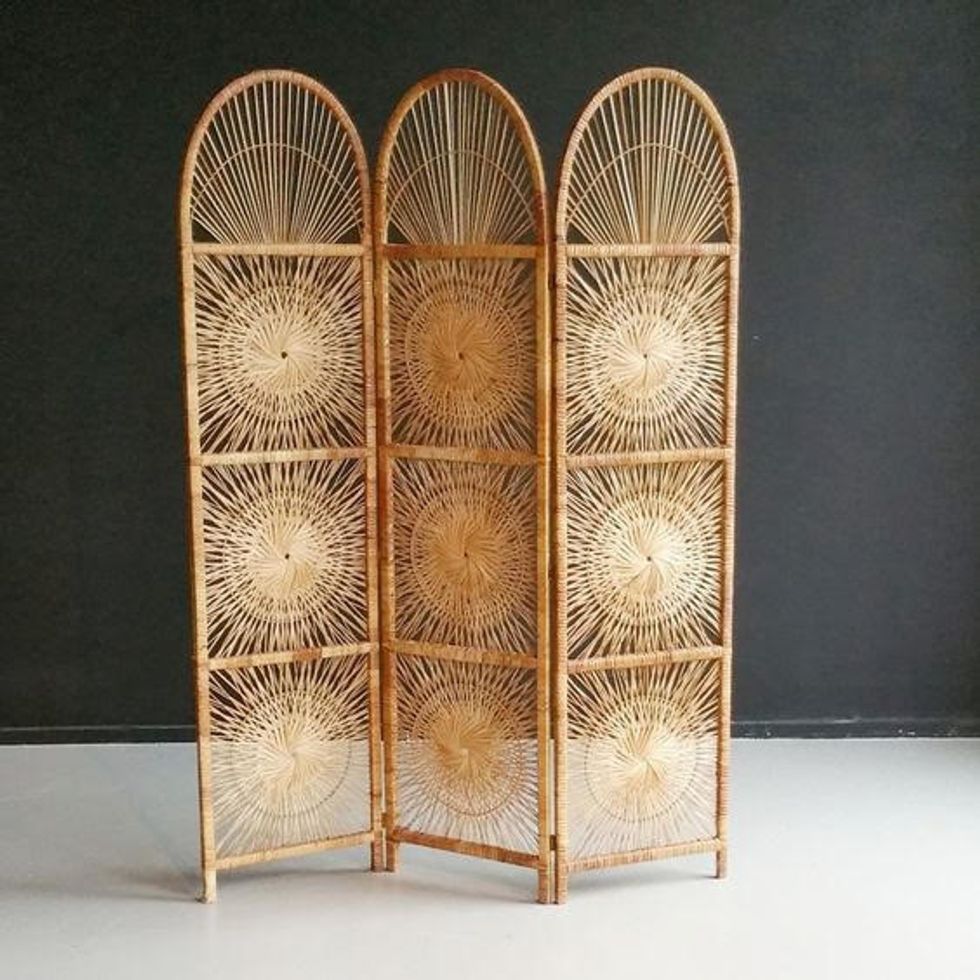For decades, folding screens have been a go-to among decorators. They illustrate depth and add visual interest in a room. They can hide unsightly clutter or divide a room in half. They can also serve as a patterned backdrop in place of costly wallpaper. Read on to find out why these experts say you need a screen in your life.
HIDE THINGS
Perhaps the most obvious use for a screen is hiding clutter. In his NYC bedroom, fashion designer (and fabric designer for The Inside) Peter Som uses the Scalloped Screen in Branches By Peter Som (of course!) to hide things like boxes. The bonus: it’s “a decorative moment for a dead corner that helps with the illusion of height.”
DEFINE SPACE
David Ries, a Senior Designer at Thad Hayes, remarks, “I like to use screens as an architectural element in a space. A way to create or define spaces with a decorative element.”
RETHINK THE HEADBOARD
San Francisco-based interior designer Margaret Ash uses upholstered screens as an alternative to traditional headboards. “Using a folding screen as a headboard is a wonderful way to bring visual interest and pattern to a bed. It is an added bonus that the folding screen has dual functions and can be moved around the house and used as decoration or a room divider if you want to create a different look down the road.”
BRING IN PATTERN
“I love the chic insouciance of a patterned screen in a space,” says The Inside’s Creative Director Danielle Walish. She’s currently loving our Scalloped Screen in Sand Melio and Modern Screen in Acid Floral. Both offer the perfect pop of pattern.
MIX OLD AND NEW
This embossed 19th century screen, when paired with a light fixture by Le Corbusier, illustrates the impact of showcasing an antique screen as art. As New York-based designer Ali Reeve puts it, “Screens are an incredibly versatile way to add interest, pattern or texture into a room without committing to something more permanent. They can easily be moved and used in a variety of spaces. I love the idea of using a screen as a headboard, a space divider or displaying it as art. They can also be used to incorporate a new texture or add verticality into a space.”


